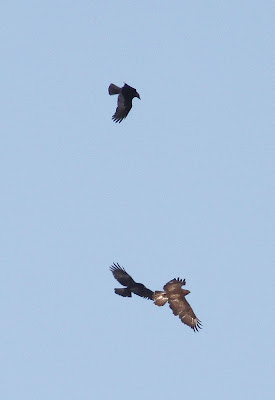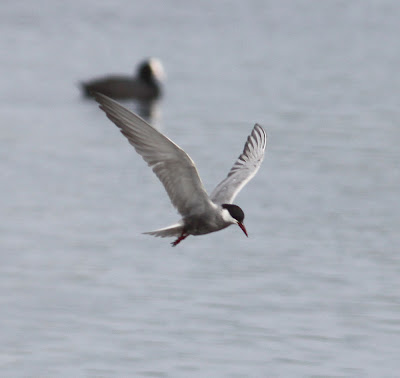A fine, dry morning at last, and even the wind had dropped. Springtime here seems to have passed me by due to a combination of poor April weather, going on holiday, and then even more rubbish weather just when we needed it least. Now we are almost in June when migration ends and resident birds fall more silent.
I set off from Lane Ends, packing a few rings into my bag - A size in case of late Wheatears, B for Skylark nests and D2 for any Lapwing chicks left after the crow assault and Hi-Fly’s farming activities.
Lane Ends had singing Reed Warbler and Sedge Warbler, and on the way to Pilling Water, the male Corn Bunting again, singing from a gate post. Out on the marsh were 3 Whimbrel, with a scan across revealing still 30+ Shelduck and 10+ Redshank in calling pairs.
Corn Bunting
It was beyond Pilling Water where I found the Lapwing chicks, three of similar size but from separate broods. The grass up there is pretty long to find whole broods unless there is a “finder” and a “guide”, the latter to watch through binoculars and direct the finder to a spot where the Lapwing chick crouched to the ground. If only it was always that easy.
Lapwing chick
The adults stay close, protesting loudly and keeping one eye on the intruder.
Lapwing
Lapwing
Excitement over I walked towards Fluke Hall where I found more adult Lapwings but no observable chicks. In the area of Worm Pool I saw a couple of Redshank, 8 Oystercatcher, a Black-tailed Godwit, and perched up on the poolside vegetation a fine, male Whinchat.
Whinchat
From the stile I counted a dozen or so Swallows and several Swifts hawking insects, my eyes diverted by a Buzzard leaving the trees of Fluke Hall, the raptor followed mercilessly by the obligatory crows. The crow shook them off just before it reached Pilling Water plantation.
Buzzard and Carrion Crow
Small numbers of Goldfinch and Linnet flew over, with a single Pied Wagtail and several Skylark about. The Skylark weren’t for giving much away apart from singing and I think a few nests may have been lost after Hi-Fly’s recent bout of rolling and tidying.
I headed back, a good morning’s work and a wonderful walk in the sun.
Stay tuned for more walks in the summer sun with Another Bird Blog with this post linking to Anni who would also rather be birding and Stewart in Australia where you can see a whole gallery of birds.
Stay tuned for more walks in the summer sun with Another Bird Blog with this post linking to Anni who would also rather be birding and Stewart in Australia where you can see a whole gallery of birds.













































































